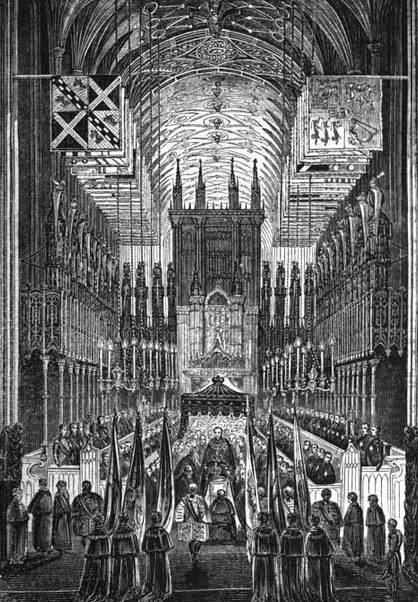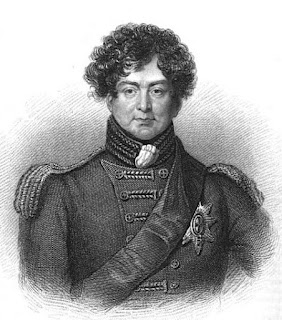Cause of death
The original disease consisted of the ossification of the valves of the aorta, which must have existed for many years, and which impeded the current of blood flowing from the heart.1A chamber of mortality and woe
George’s body was placed in a coffin of Spanish mahogany lined with white satin, which was then placed in a leaden coffin bearing his details on an engraved silver plate. His body was prepared for the lying in state under the superintendence of a Mr Marsh and the coffin was placed in the King’s drawing room, under a rich, purple canopy. The body lay in state for two days where it was viewed by the public, all dressed in decent mourning.
Huish records that:
The mourners stood perfectly motionless, and like statues upon a sepulchre. The atmosphere of the apartment rose at times to a stifling heat. It was the chamber of mortality and woe. The public passed through in one continuous stream from ten in the morning till four in the afternoon.2
 |
| Windsor Castle from Memoirs of Queen Charlotte by WC Oulton (1819) |
Huish states that there was a great rush getting into the chapel for the funeral, but then a long wait for the procession, so that people began to chatter rather than wait in silence:
We did not hear any one word of praise of his late Majesty, nor one syllable of regret. Much was said of the procession; many conjectures were formed as to the ceremony; but as to him in whose honour it was supposed to be all got up, not one word was said. The show interested the people, the dead King was an object of complete indifference.3
 |
| George IV's funeral from The Mirror, 7 August 1830 |
The final resting place of George IV
 |
| The Royal Mausoleum, Windsor from Memoirs of George IV by Robert Huish (1830) |
The coffin was lowered into the passage leading to the royal vault at about half past ten. The ceremony was finished by Sir George Nayler proclaiming the style and titles of the late King, ending with the words, “God save King William IV.” A rocket was then let off and the band played God save the King.
If you have enjoyed this blog and want to encourage me and help me to keep making my research freely available, please buy me a virtual cup of coffee by clicking the button below.
Notes
- Bell, John, La Belle Assemblée (1830, London).
- Huish, Robert, Memoirs of George IV (Thomas Kelly, 1830, 1831, London).
- Ibid.
Sources used include:
Bell, John, La Belle Assemblée (1830, London)
Huish, Robert, Memoirs of George IV (Thomas Kelly, 1830, 1831, London)
Huish, Robert, History of the life and reign of William the Fourth(William Emans, 1837, London)
Oulton, Walley Chamberlain, Authentic and Impartial Memoirs of Her Late Majesty Charlotte, Queen of Great Britain and Ireland (1819, London)



It must have been a really big coffin.
ReplyDeleteDid the bearers carry the coffin on there shoulders in them days
ReplyDeleteAnn
I am not sure quite how they carried them as I have not come across any pictures of people carrying coffins at this time, but there were definitely pall bearers - the Duke of Gloucester was one of the pall bearers for Wilberforce who died in 1833.
Deletehttp://www.regencyhistory.net/2012/04/william-wilberforce-1759-1833.html
thanks for reply i did not know Duke of Gloucester was one of the pall bearers for Wilberforce who died in 1833
DeleteI have read many books on The Georgian kings and almost without fail the funerals are chaotic and utterly disrespectful affairs,so demonstrative of "people of quality" as they liked to describe themselves.
ReplyDeleteThe most solemn occasion would seem to have been the funeral of Princess Charlotte whose death plunged the whole country into mourning.
Delete